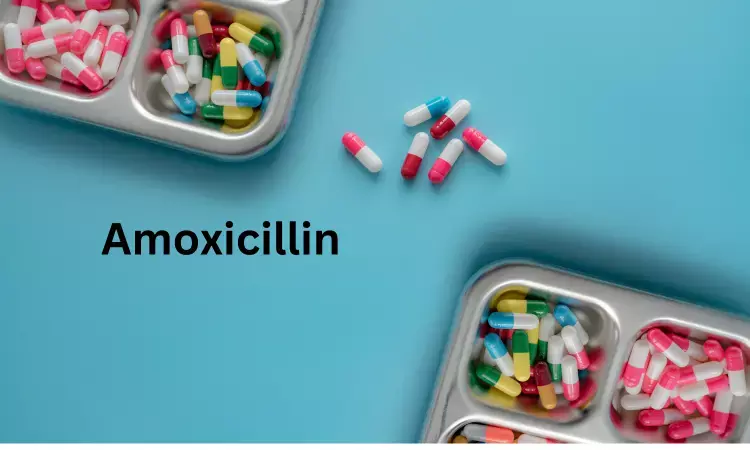- Home
- Medical news & Guidelines
- Anesthesiology
- Cardiology and CTVS
- Critical Care
- Dentistry
- Dermatology
- Diabetes and Endocrinology
- ENT
- Gastroenterology
- Medicine
- Nephrology
- Neurology
- Obstretics-Gynaecology
- Oncology
- Ophthalmology
- Orthopaedics
- Pediatrics-Neonatology
- Psychiatry
- Pulmonology
- Radiology
- Surgery
- Urology
- Laboratory Medicine
- Diet
- Nursing
- Paramedical
- Physiotherapy
- Health news
- Fact Check
- Bone Health Fact Check
- Brain Health Fact Check
- Cancer Related Fact Check
- Child Care Fact Check
- Dental and oral health fact check
- Diabetes and metabolic health fact check
- Diet and Nutrition Fact Check
- Eye and ENT Care Fact Check
- Fitness fact check
- Gut health fact check
- Heart health fact check
- Kidney health fact check
- Medical education fact check
- Men's health fact check
- Respiratory fact check
- Skin and hair care fact check
- Vaccine and Immunization fact check
- Women's health fact check
- AYUSH
- State News
- Andaman and Nicobar Islands
- Andhra Pradesh
- Arunachal Pradesh
- Assam
- Bihar
- Chandigarh
- Chattisgarh
- Dadra and Nagar Haveli
- Daman and Diu
- Delhi
- Goa
- Gujarat
- Haryana
- Himachal Pradesh
- Jammu & Kashmir
- Jharkhand
- Karnataka
- Kerala
- Ladakh
- Lakshadweep
- Madhya Pradesh
- Maharashtra
- Manipur
- Meghalaya
- Mizoram
- Nagaland
- Odisha
- Puducherry
- Punjab
- Rajasthan
- Sikkim
- Tamil Nadu
- Telangana
- Tripura
- Uttar Pradesh
- Uttrakhand
- West Bengal
- Medical Education
- Industry
Oral Amoxicillin adequate and cost-effective for neonates compared to intravenous therapy

Amoxicillin is a most popular drug used to treat respiratory tract infections and uncomplicated urinary tract infections. It has been administered both orally and intravenously. In neonatology, amoxicillin combined with an aminoglycoside is commonly used in cases of suspected sepsis. However not much is known on oral amoxicillin pharmacokinetics and exposure in neonates with possible serious bacterial infection (pSBI).
A population based pharmacokinetic study, in Clinical Infectious Diseases journal suggests that, neonates treated with oral amoxicillin in the initial weeks of life reach adequate amoxicillin levels following a twice-daily dosing regimen than intravenous showed greater results. Oral amoxicillin therapy could therefore be an adequate, cost-effective, and more patient-friendly alternative for neonates worldwide.
In this present pooled-population pharmacokinetic study, 3 datasets were combined for nonlinear mixed-effects modeling. In order to evaluate amoxicillin exposure following oral and intravenous administration, pharmacokinetic profiles for different dosing regimens were simulated with the developed population pharmacokinetic model. A target of 50% time of the free fraction above the minimal inhibitory concentration (MIC) with an MICECOFF of 8 mg/L (to cover gram-negative bacteria such as Escherichia coli) was used.
The key findings of the study are
• The cohort consisted of 261 (79 oral, 182 intravenous) neonates with a median (range) gestational age of 35.8 weeks (range, 24.9–42.4) and bodyweight of 2.6 kg (range, 0.5–5).
• A 1-compartment model with first-order absorption best described amoxicillin pharmacokinetics.
• Clearance (L/h/kg) in neonates born after 30 weeks’ gestation increased with increasing postnatal age (PNA day 10, 1.25-fold; PNA day 20, 1.43-fold vs PNA day 3).
• Oral bioavailability was 87%.
• They found that a twice-daily regimen of 50 mg/kg/day is superior to a 3- or 4-times daily schedule in the first week of life for both oral and intravenous administration.
The researchers concluded that “We conclude that neonates treated with oral amoxicillin in the first weeks of life reach adequate amoxicillin levels following a twice-daily dosing regimen. Oral amoxicillin therapy could therefore be an adequate, cost-effective, and more patient-friendly alternative for neonates worldwide.”
Reference: Fleur M Keij, Stef Schouwenburg, René F Kornelisse, Tim Preijers, Fatima Mir, Pieter Degraeuwe, Leo M Stolk, Arianne van Driel, Sandra Kenter, Jacqueline van der Sluijs, Jojanneke Heidema, Paul C P den Butter, Irwin K M Reiss, Karel Allegaert, Gerdien A Tramper-Stranders, Birgit C P Koch, Robert B Flint, Oral and Intravenous Amoxicillin Dosing Recommendations in Neonates: A Pooled Population Pharmacokinetic Study, Clinical Infectious Diseases, 2023;, ciad432, https://doi.org/10.1093/cid/ciad432.
MSc. Neuroscience
Niveditha Subramani a MSc. Neuroscience (Faculty of Medicine) graduate from University of Madras, Chennai. Ambitious in Neuro research having worked in motor diseases and neuron apoptosis is interested in more of new upcoming research and their advancement in field of medicine. She has an engrossed skill towards writing and her roles at Medical dialogue include Sr. Content writer. Her news covers new discoveries and updates in field of medicine. She can be reached at editorial@medicaldialogues.in
Dr Kamal Kant Kohli-MBBS, DTCD- a chest specialist with more than 30 years of practice and a flair for writing clinical articles, Dr Kamal Kant Kohli joined Medical Dialogues as a Chief Editor of Medical News. Besides writing articles, as an editor, he proofreads and verifies all the medical content published on Medical Dialogues including those coming from journals, studies,medical conferences,guidelines etc. Email: drkohli@medicaldialogues.in. Contact no. 011-43720751


